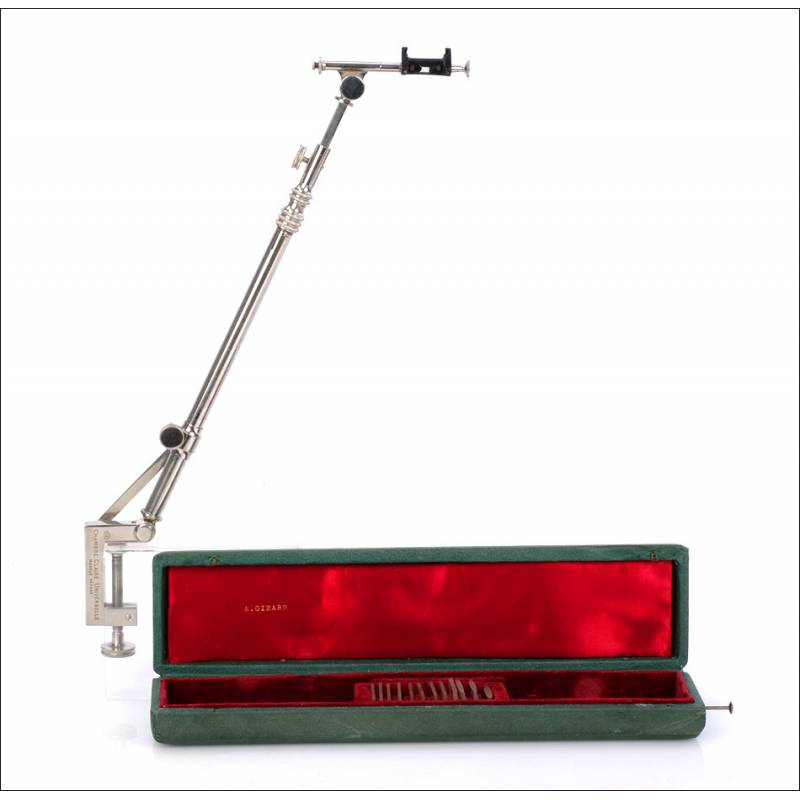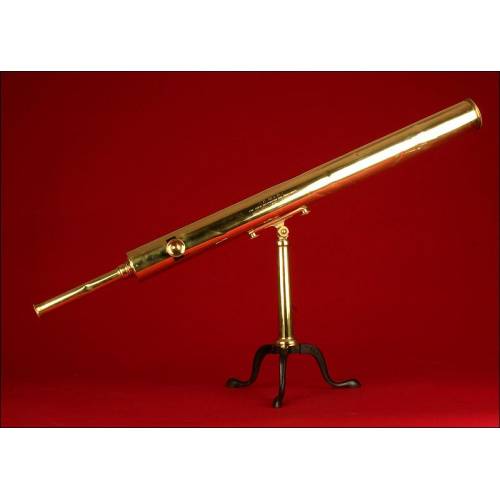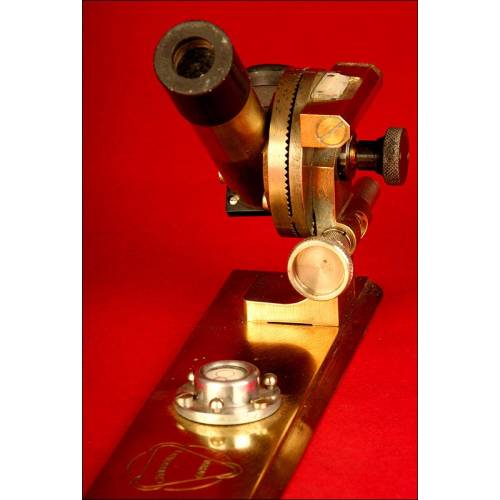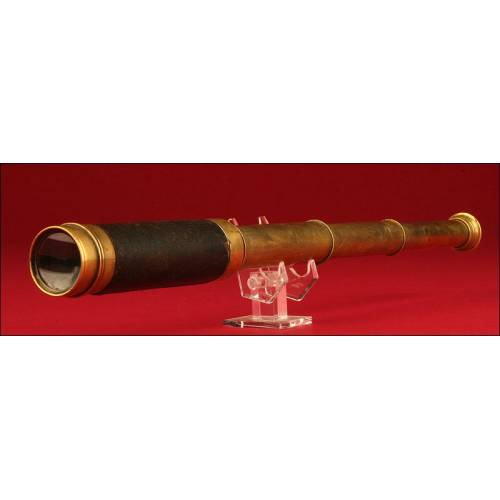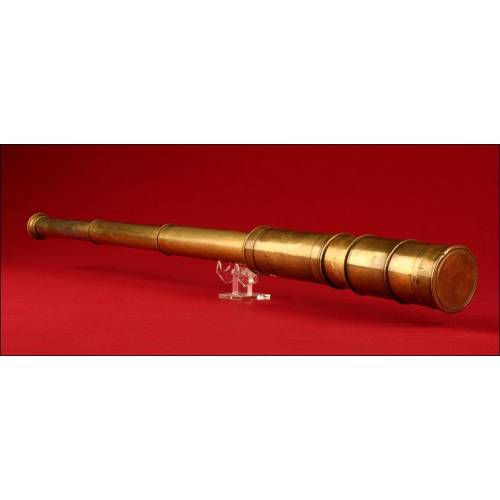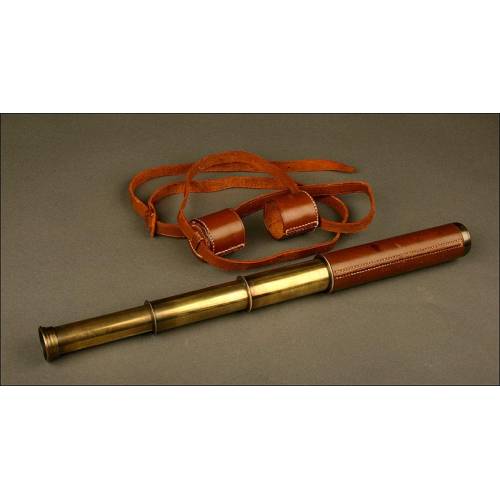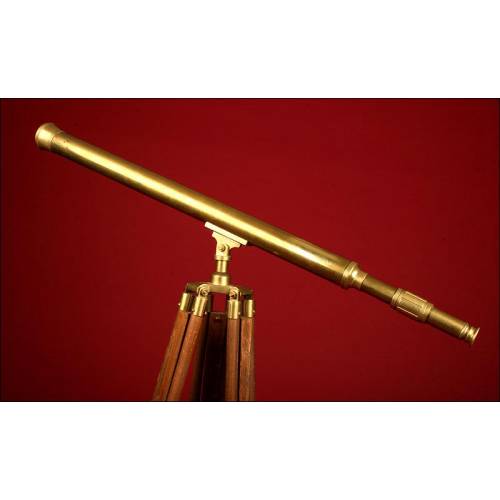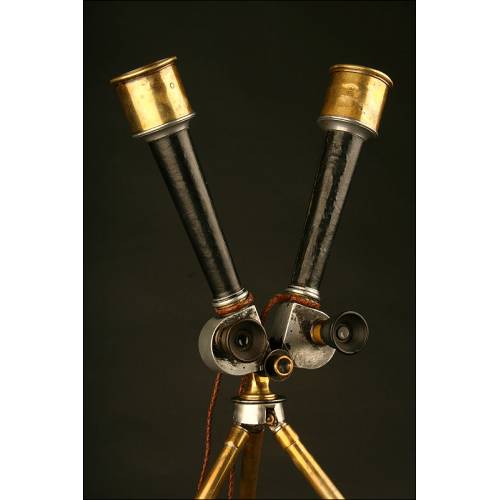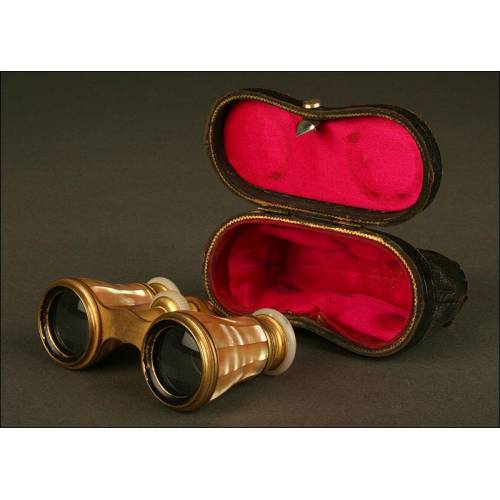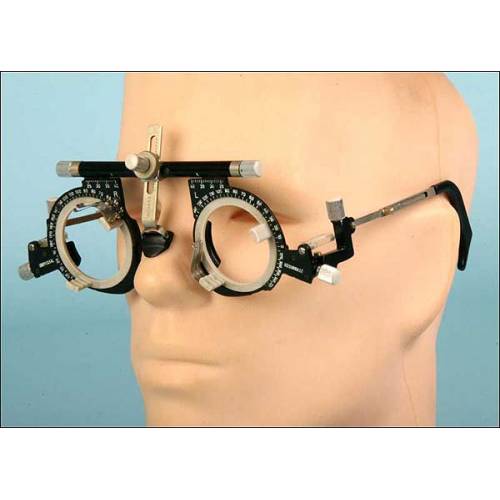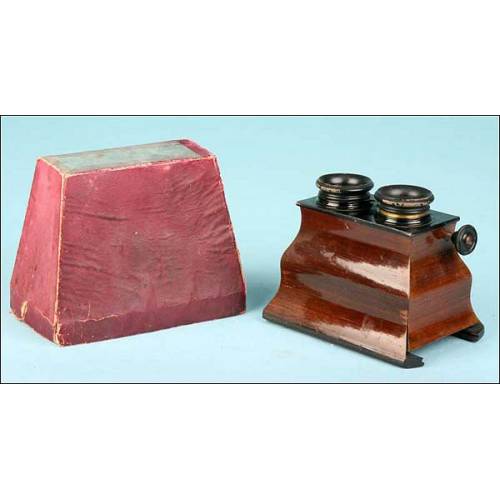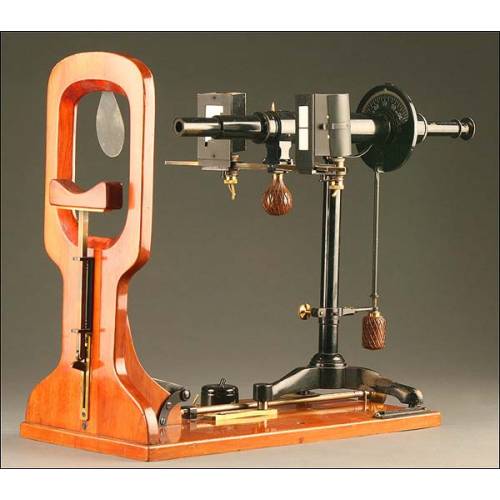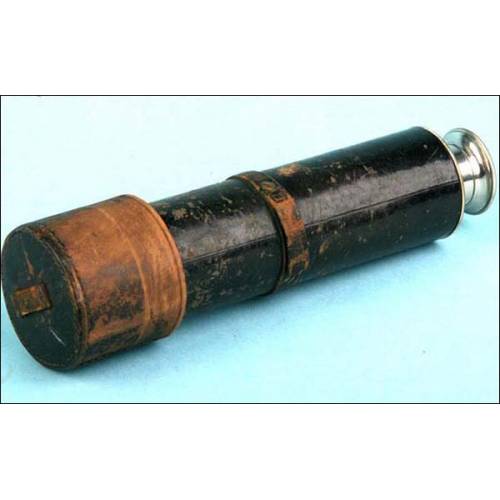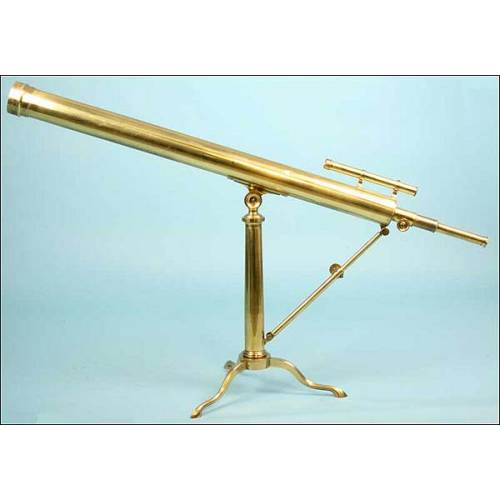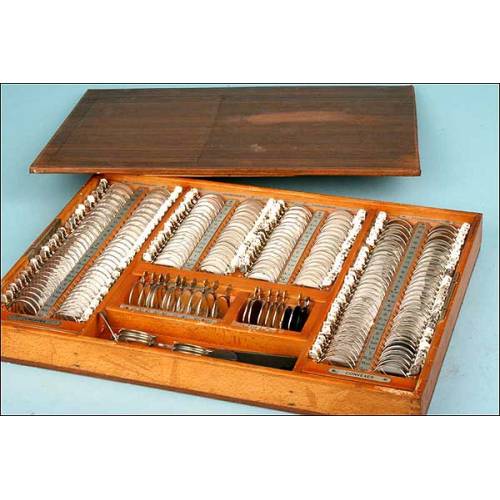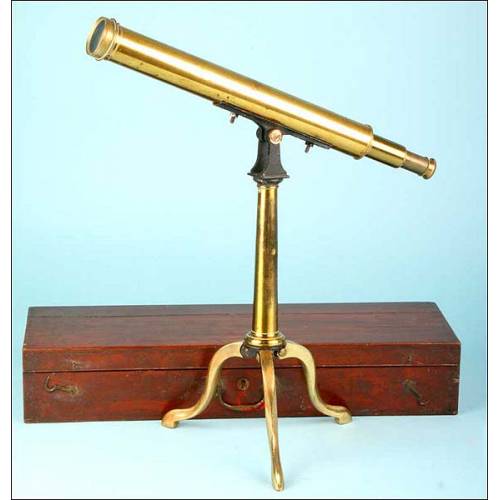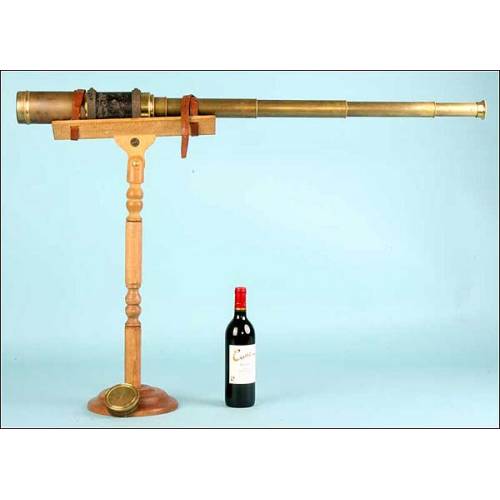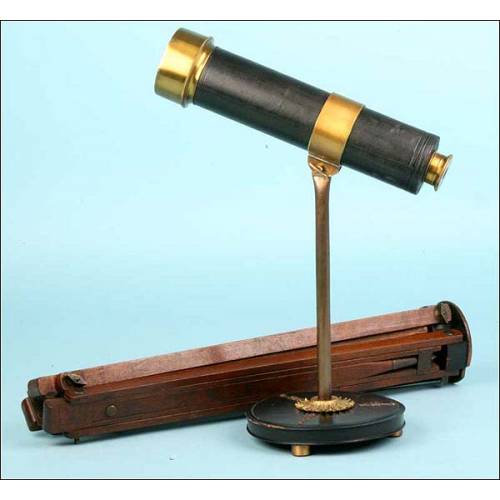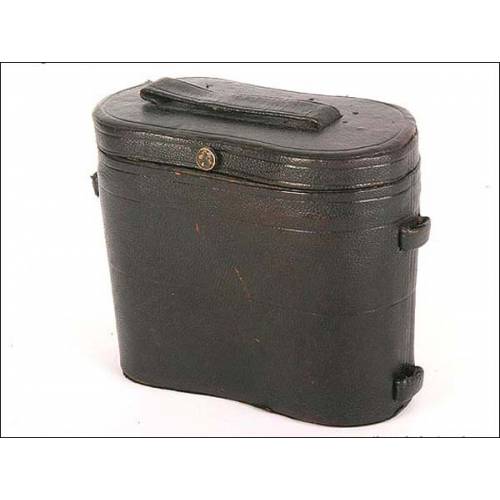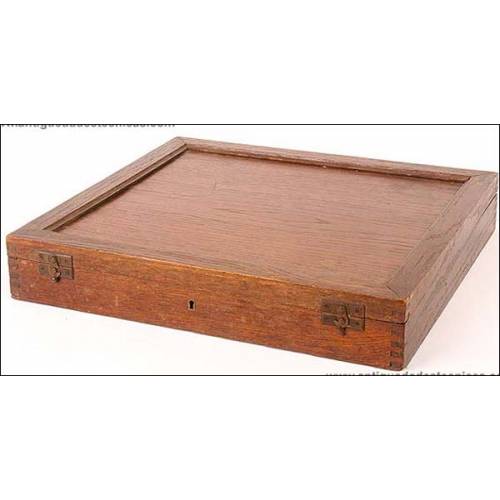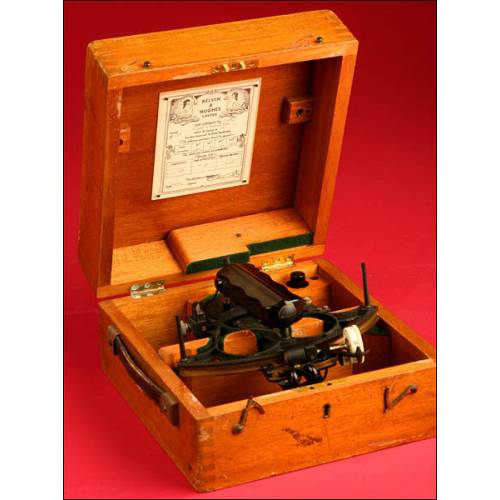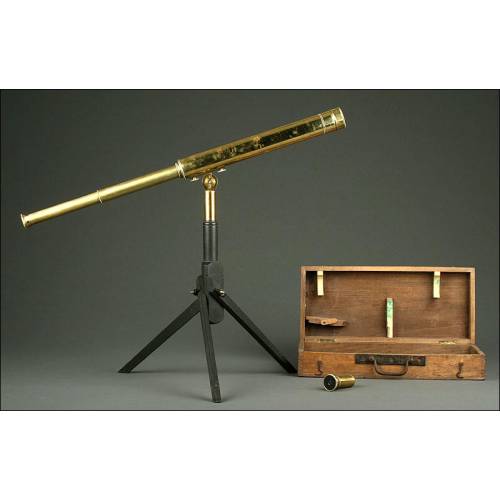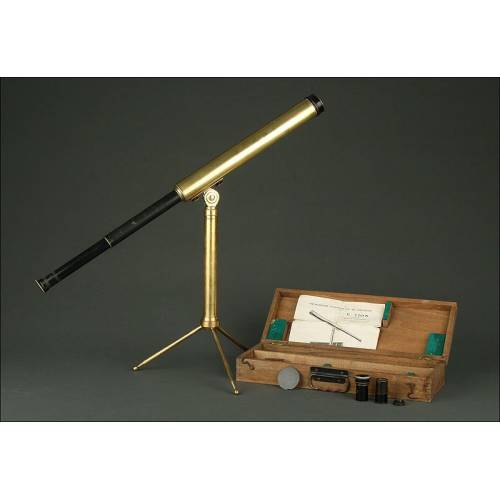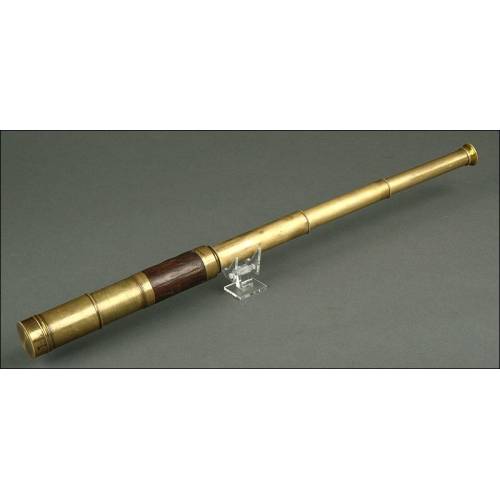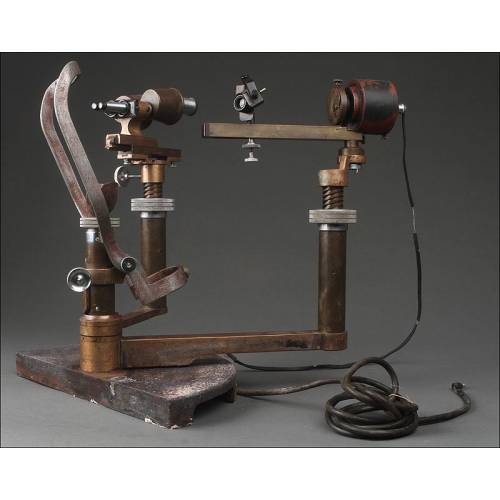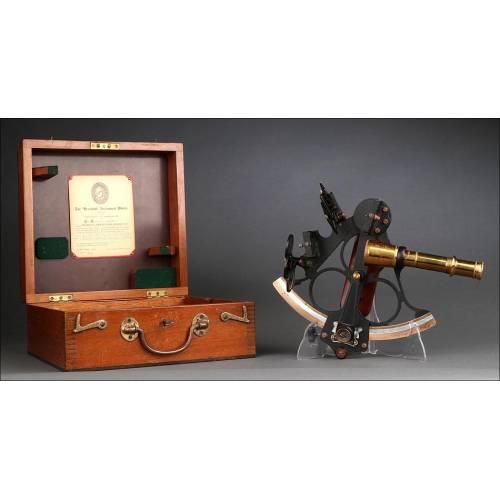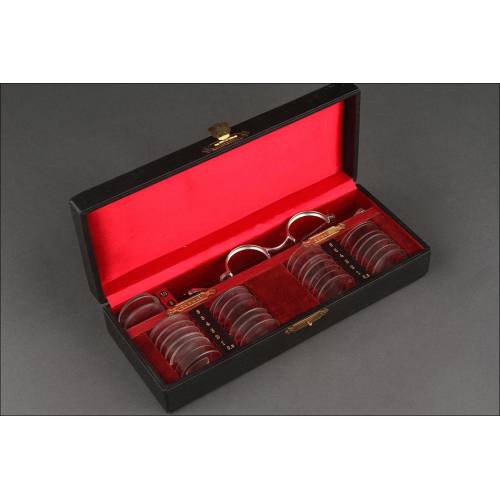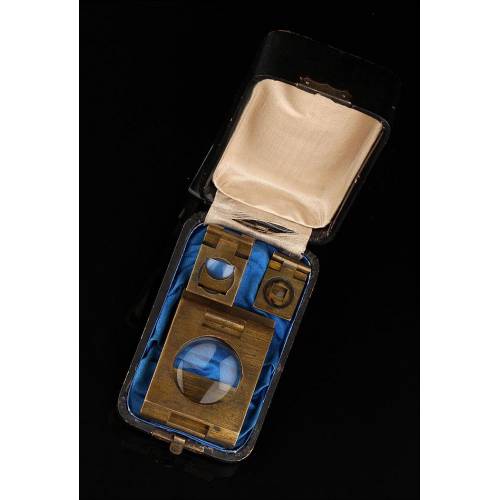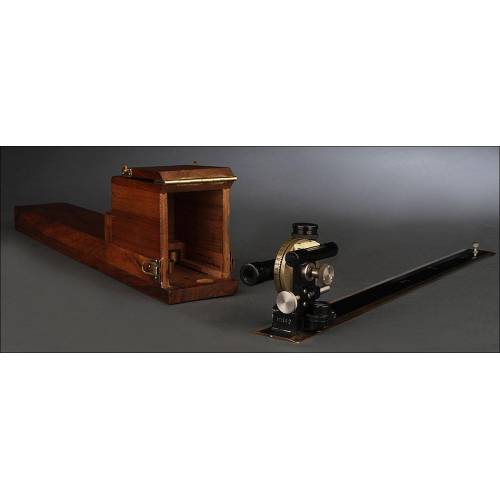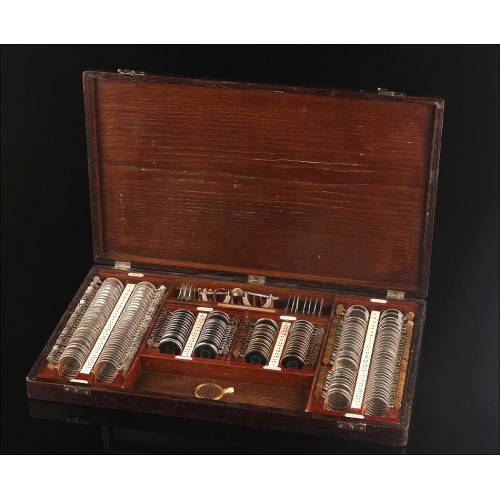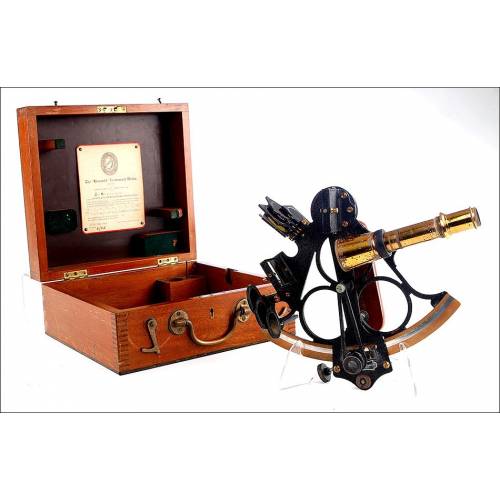C-559
Antique Universal Girard Camera Lucida. Complete. France, Circa 1900
Antique Girard universal camera lucida in working condition. With all its original parts and guard case.
Sold!
Antique Girard universal camera lucida, complete and in its original storing case. This fine attractive piece was made in France circa 1900 and has survived to our days in excellent condition. It is complete and preserves all its original component parts and pieces. The metal clamp used to attach the camera lucida to a desk or board bears the engraved inscription CHAMBRE LUCIDE UNIVERSELLE. This curious device is composed of silvery-metal mobile component parts, all of them greatly preserved and with no signs of rust, wear or scratches. It is designed to reproduce objects from life, drawing them on a paper with the help of an ingenious view combination. The camera lucida comes with its original storing case. Inside we also find a series of old-time lenses, essential to use the device. The case is a long box outside covered of light-green leatherette. Inside it is covered of a fine red satin and velvet lining. Printed on the red satin we can see the manufacturers name, A. GIRARD, in perfectly visible golden lettering. This original antique Girard universal camera lucida is a very decorative piece that can still be used to draw from life. Medidas: Longitud: Hasta 64 cm. Camera Lucida - History The first camera lucida was created in the 19th century and was intended to draw objects, landscapes and portraits while keeping the exact proportions. Its operation was first described by Johannes Kepler in his work Dioptrica (1611), but there is no evidence of any camera lucida being constructed in those days. The first one ever made was designed by William H. Wollaston in 1807; he was also the one who gave it its name (camera lucida, which in Latin stands for dark room). During the 19th and part of the 20th, these devices became hugely popular. Curiously, in 1833 the photo pioneer Willim Fox Talbot tried to draw images from life using a camera lucida. As he was not satisfied by the outcome, he decided to search for a method which would print images from life in a long-lasting way. It was then when photography was born.

